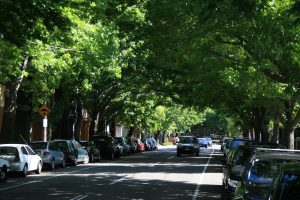Words by Tony Hepworth
Bio = biodiversity / nature / environment
Philia = love of
No, not a disease but a point of view that humans are hard-wired by our genetic inheritance to need nature. Yep. Need. We don’t have a choice.
- The idea first came from the ancient Greeks, in this case from Hippocrates, who also gave us the Hippocratic oath.
- Much later, 1984, Roger Ulrich, Chalmers University of Technology, Sweden and Aalborg University, Denmark, published a study from 1972 – 1980 of patients who’d had their gallbladder removed. Those who looked out the window of their hospital room and saw greenery, healed faster and required less medication than those who saw a courtyard or a car park.
- More recently, Qing Li of the Nippon Medical School, Tokyo, measured the stress hormone, cortisol, in saliva. A walk in the forest drastically lowered cortisol levels but a walk in the city did not. Urine samples then showed the walk also lowered the stress hormone, adrenaline, by 30% for men and 35% for women.
In 2001, Dr Howard Frumkin wrote in the American Journal of Preventative Medicine:
Our standard clinical paradigm involves medications more than non-medical approaches, treatment more than prevention. But many people are intuitively drawn to this idea. They feel restored and healthier in a beautiful landscape.
And on the other side, many environmentalists work to preserve nature for a range of very good environmental reasons, but forget that one of the major benefits may be human health.
The evidence continues to mount:
- The Environmental Health Perspectives journal reported people who live in “greener” areas, with more vegetation around, have a lower risk of mortality.
- Research has shown pet owners have fewer health problems than non-pet owners, e.g., lower blood pressure, improved survival after heart attacks and enhanced ability to cope with stress.
- Lower rates of prescriptions for anti-depressants in neighbourhoods that are close to woodlands in Britain.
- People living in the greenest places, who had the most vegetation within 250 metres of their homes, had a 12 percent lower rate of mortality from any non-accidental cause than people living in the least green places. These results were the same regardless of the participants’ income, weight or smoking status and also did not significantly change between urban and suburban locations.
- In another study, prisoners in cells facing a courtyard had a 24 percent higher frequency of visits to the prison’s clinic than those in cells overlooking the landscape.
Want more ideas about biophilia? Then check out:
Why living around nature could make you live longer
Mother Nature is a great nurturer
Edward O. Wilson, Biophilia (1984). Harvard University Press, Cambridge, Mass.
Clemens G Arvay, The Biophilia Effect (2018 – English edition). Sounds True, Boulder, Colorado.
Across Europe, research has shown that the simple presence of natural elements in the work environment can act as a buffer against the negative impact of job stress and positively impact general wellbeing.
It’s a connection which has been made in many settings, including the healthcare profession. For example, in patient waiting rooms with murals depicting natural scenes such as mountains, sunset, grassy areas and stone paths, patients felt significantly calmer and less tense than those sat in a waiting room with plain white walls.




